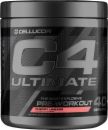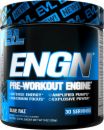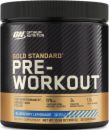
8 Popular Caffeine Sources And How They Differ
Here's the inside track on the most common sources of caffeine used in dietary supplements. Do you know what's giving you your buzz today?
It's not much of an overstatement to say that caffeine is as ubiquitous in American society as drinking liquids, period. A recent survey of 24,808 adults reported that 89 percent of all adults in the United States consume caffeine regularly, and that 98 percent of our psychoactive fix is being delivered as a beverage. Men consume an average of about 240 milligrams of caffeine per day, and women about 183 milligrams.1
In short, most of us probably drink more caffeine than non-caffeine in our daily lives.
And that's to say nothing of what happens in the gym. Though the study didn't categorize caffeine users beyond age and sex, I'd venture to guess that the majority of sports-nutrition consumers fall into what the researchers reported as the highest 10 percent of users—those who consume an average of 436-1066 milligrams of caffeine each day.
You love it. You need it (or at least you think you do—that's a whole other conversation). But where are you getting it? In this post-ephedrine era, companies attempt to differentiate their products from their competition by delivering caffeine in a variety of different sources. This raises a number of questions. Is any particular source better than another, or are there benefits to receiving caffeine from a blend of different sources versus pure caffeine?

As someone who formulates, conducts and publishes sports-nutrition research, and who has also worked in the branding and marketing side of things, I'm in a unique position to relay industry secrets pertaining to the different sources of caffeine being included in today's fat burners, pre-workouts, and energy blends. I won't, however, waste your time revisiting caffeine 101—what it is, the doses present in common foods and beverages, or its safety and efficacy. There are many articles here on Bodybuilding.com where you can find all of that information.
Instead, I'm going to try to prepare you to identify caffeine-specific ingredients, see how much caffeine you're likely getting from each source, understand why a formulator may have included an ingredient within a product, and when you may want to use one source of caffeine over another.
Synthetic Forms of Caffeine
There are many potential forms of "synthetic" caffeine, and each may be marketed under different chemical names in an attempt to appear novel from the competition. Below are the commonly employed forms and names of such ingredients you're most likely to find on supplement labels.
Caffeine Anhydrous
- Other names: Caffeine; guaranine, 1,3,7-trimethylxanthine
- Caffeine dose (per milligram): Greater than or equal to 98.5 percent (i.e., at least 98.5 milligrams of caffeine is provided for every 100 milligrams of caffeine anhydrous included within the formulation) 2
- What you need to know: Often referred to as "pure caffeine," this is the most widely used form of added caffeine in dietary supplements, energy drinks, and over-the-counter drugs.
Caffeine anyhdrous' low cost, high caffeine concentration per milligram, high stability, and decent solubility make it incredibly attractive to brands looking to pack a stimulant punch without breaking the bank. Though naturally derived forms of caffeine anhydrous are also available, no data has compared any physiological differences between natural versus synthetic. So most companies simply formulate with the much cheaper, more readily available synthetic form.
Most of what is known about caffeine—and what companies will use to support claims against their use of caffeine, often regardless of the source—is almost exclusively based upon research that has employed caffeine anhydrous. For example, we can say confidently that caffeine, as anhydrous, is quickly absorbed into the circulatory system, with peak concentrations in the blood achieved within 30-60 minutes after ingestion. It is then distributed throughout the body and crosses the blood-brain barrier, with 2 percent or less being excreted (unchanged) in the urine.
From a sports-nutrition perspective, caffeine anhydrous has been shown to "directly potentiate skeletal muscle force, work and power," according to a study published in the British Journal of Pharmacology.3 In other words, it can theoretically help pretty much everything that happens in the weight room and most other athletic settings. Companies that strictly adhere to the regulations for substantiating marketing claims will often use caffeine anhydrous in a dose easily supported by human data.
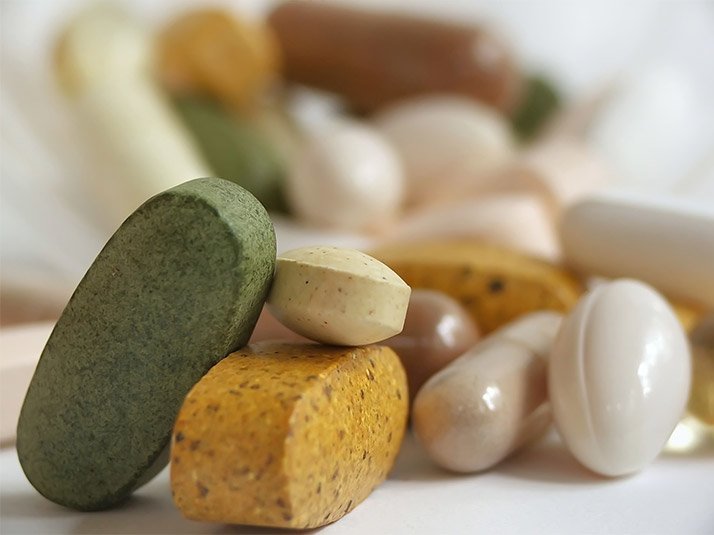
For example, about 2.73 milligrams of caffeine (from anhydrous), per 1 pound of bodyweight (or, about 491 milligrams of caffeine for a 180-pound adult), consumed one hour prior to a cycling test to exhaustion was shown to improve the time to exhaustion by about 23 percent and slightly increased the use of fat as fuel, to the tune of about 3 percent.4
In an earlier study that used the same dose of caffeine, fat burning increased under resting conditions, but not during exercise. Additionally, the stimulant hormones adrenaline (epinephrine) and noradrenaline (norepinephrine) rose significantly under both resting and exercise conditions.5
So how does that stack up against your cup of coffee? Studies have shown that pure caffeine will offer you a more reliable performance response than comparable amounts of caffeine from coffee. Specifically, one study found that 2.1 milligrams of caffeine, per pound of body weight (e.g., 378 milligrams of caffeine for a 180-pound adult) as caffeine anhydrous supplement was more effective at boosting treadmill-running performance and increasing epinephrine response than consuming the same caffeine from brewed coffee.6
Thus, there have to be some naturally occurring elements in coffee that counteract some of the stimulant and performance-enhancing effects of caffeine. However, there are some well-documented health benefits derived from coffee that are absent when replaced with pure caffeine.
The bottom line: We know what caffeine anhydrous does, and it does it predictably. For the moment, it remains the standard.
Caffeine Citrate
- Caffeine dose (per milligram): 45-55 percent (i.e., between 45 and 55 milligrams of caffeine is provided for every 100 milligram of caffeine citrate included within the formulation)7
- What you need to know: Caffeine citrate has better solubility than pure caffeine, but is less stable and is infrequently used in dietary supplements because of its cost-to-benefit ratio. That is, more of the ingredient is needed to obtain a comparable caffeine dose, and some evidence suggests it may not work as well as the anhydrous form at boosting muscle contractions during strength training.
Caffeine citrate does, however, appear to be a more potent antibacterial than pure caffeine. It also has a lower pH.8 This helps control microbiological growth and can improve a product's shelf life.
The bottom line: Few studies exist comparing caffeine citrate to pure caffeine, or other forms of caffeine for that matter.
Dicaffeine Malate
- Other names: Infinergy®
- Caffeine dose (per milligram): 65-70 percent
- What you need to know: Dicaffeine malate is marketed as a fully reacted form of caffeine and malic acid, which is to say that the structure most likely separates rapidly once it enters your stomach or when combined with water. Supplement companies claim this means it could provide caffeine anhydrous' boost, but without the upset stomach some people experience.
At this point, that's entirely speculative. There are no pharmacokinetic, physiological, or toxicological studies currently present from which to assess this ingredient's effectiveness or safety versus other forms of caffeine.
The bottom line: For the time being, there's no reason to think this is any better than more popular, more studied forms of caffeine. Take any claims being made about it with a huge grain of salt.
Botanical Sources of Caffeine
Below are the most commonly used plant sources of caffeine, along with the plant part or parts most often used and the naturally occurring concentration of caffeine found in the plant (on a dry basis). I've listed the plants in order of highest-to-lowest dose of naturally occurring caffeine.
Tea extract
- Other names: Camellia sinensis, green tea, green tea extract, black tea, chai, cha, oolong tea
- Plant part(s) used: Leaf or shoot
- Naturally occurring caffeine dose: 4.8-9.3 percent9
- What you need to know: Ever since ephedrine was removed from the industry, the use of tea extracts has increased exponentially. Unfortunately, you often won't know the caffeine contribution from a tea ingredient within a formulation unless the company marketing the product includes it on the label.
MET-Rx's green tea extract, to pick one example, says on the label that it contains 80 milligrams of caffeine per two capsules. On the other hand, Now Foods' comparable product contains only 16 milligrams per capsule. Does this make one better than the other? Not necessarily. Caffeine is only part of what makes tea extracts effective.
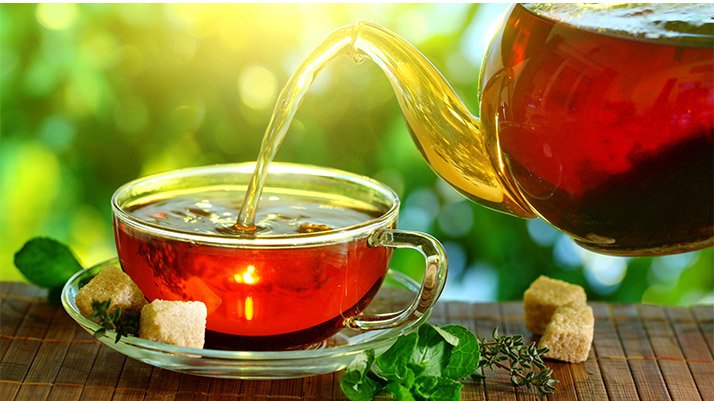
The good news is that there's more research on the comparative effects of tea versus pure caffeine, and among the different kinds of tea, than what you'll find for most other botanical sources of caffeine discussed here. For example, compared to black tea, green tea appears to have a greater impact on energy metabolism.10
Active-ingredient concentrations also differ considerably based upon the type of tea and the extraction method used. Caffeine concentration is highest in black tea, then oolong, then green, but EGCG and total catechins are highest in green tea, then oolong, then black.11 Beyond their role as powerful antioxidants, catechins can have positive effects on fat metabolism, blood vessel dilation, and cholesterol.
The bottom line: Tea extracts have a lot going for them, but they can run the gamut in caffeine content. It's probably worth your while to investigate how much yours contains, especially if you're taking other stimulants.
Guarana
- Other names: Paullinia cupana
- Plant part(s) used: Seed or fruit
- Naturally occurring caffeine dose:7.6 percent12
- What you need to know: Guarana is typically quite soluble in water, and is often used as a flavoring component because it provides a fruity aroma and a tangerine-like flavor. This, combined with its caffeine content, makes it a popular ingredient in RTDs and other energy drinks.
Though design flaws and method bias are clearly present within several of the studies comparing guarana to caffeine, the use of guarana does seem to impart cognitive, energy, and mood benefits, and its effects don't appear to be dependent on the amount of caffeine accompanying them.13-15
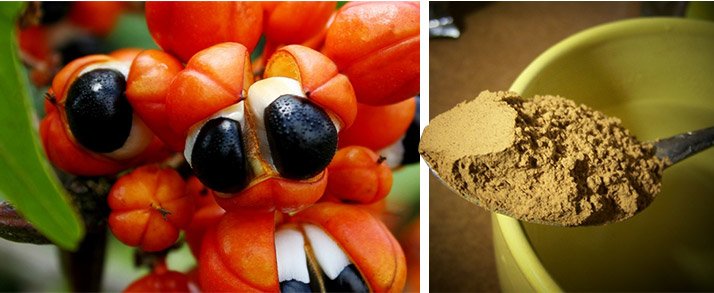
As has also consistently been shown with pure caffeine and other caffeine-containing plants, evidence seems to support improved effects when guarana is consumed in the absence of carbohydrates and in a low-glycemic state. The effective dose range is probably somewhere between 75-300 milligrams when using a 12 percent caffeine-containing guarana-seed extract. However, the percent of caffeine can run the gamut depending on whether the guarana comes from leaves or seeds and the extraction process.
The bottom line: As with green tea, the amount of caffeine can range from as little as 7 percent to as much as 50, so don't disregard guarana as a weak stimulant, particularly if you are taking other caffeine forms or stimulants along with it.
Coffee extract
- Other names: Coffea arabica, green coffee extract, Purecaf
- Plant part(s) used: Bean or whole fruit
- Naturally occurring caffeine dose:3.2 percent16
- What you need to know: Depending upon the finished product's primary purpose—stimulant, fat burner, or antioxidant and anti-inflammatory—the caffeine content of a coffee extract may be concentrated to as high as 98 percent, or not concentrated at all and standardized to less than 2 percent total caffeine.
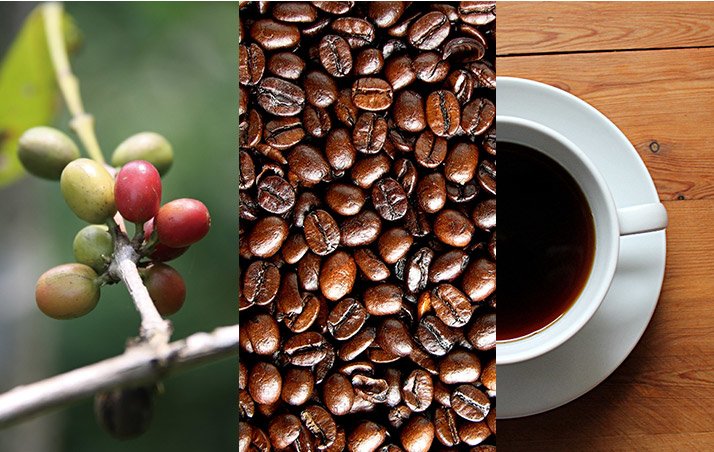
On the other hand, green coffee bean extract products are often higher in chlorogenic acids (which have other health benefits), but lower in caffeine. Most commonly, a green coffee bean extract label will look more like this:
Green Coffee Bean Extract (Coffea arabica)
(min. 50% Chlorogenic Acids) (up to 12 mg of naturally occurring caffeine)
The bottom line: If you're explicitly looking for a natural alternative to synthetic caffeine anhydrous that provides the same performance effects, coffee extracts may provide it. But read labels closely to make sure you're getting what you think.
Kola
- Other names: Kola nut, cola, Cola acuminata
- Plant part(s) used: Seed
- Naturally occurring caffeine dose: 2.5 percent17
- What you need to know: If you see kola nut listed as an ingredient within an energy blend or formula, it's more than likely an extract standardized to 10 or 20 percent caffeine. Aside from the caffeine, kola extracts typically provide a nutty taste, odor, and brownish appearance to whatever is mixed with the ingredient. The fact that soda-flavored products are generically referred to as "cola" is no coincidence; kola nut was an ingredient in the original Coca-Cola and Pepsi-Cola formulas.
No data in humans compares the effects of kola nut to pure caffeine, but what is available within rodent and canine studies seems to indicate a similar response versus pure caffeine. For example, pure caffeine has been shown to be equally as effective as kola nut at decreasing body weight and increasing glucose uptake into skeletal muscle.18,19
One potential downside of kola nut extract has been observed, though—six weeks of the human equivalent dose of 0.15 milligrams, 0.44 milligrams, or 0.74 milligrams per pound of body weight (or, about 26, 80, or 133 milligrams for a 180-lb adult, respectively) per day was shown to significantly reduce sperm count, testosterone, and luteinizing hormone in male rats.20
The bottom line: If having a nonsynthetic caffeine source is important to you, kola nut could fit the bill. Plus, it can help increase oxygen levels in the blood and promote better concentration. Just be aware of the potential downside of the nut!
Mate
- Other names: Ilex paraguariensis, Yerba mate
- Plant part(s) used: Leaf
- Naturally occurring caffeine dose: 2.0 percent21
- What you need to know: Yerba mate, like Camellia sinensis, is most commonly consumed as a tea and is reported to provide many of the same benefits. The research, however, is predominantly in rodent models and has assessed the ingredient's effects on obesity, inflammation, blood lipids, antioxidative properties, or other such health measures.22,23
For example, the human equivalent mate-extract dose of approximately 1.82 or 3.64 milligrams per pound of body weight (or about 330 milligrams or 660 milligrams for a 180-pound adult) per day for three weeks was shown to significantly reduce body weight gained, fat mass, and food intake in mice that were placed on a high-fat, inflammatory diet. The higher the dose, the better the effects.
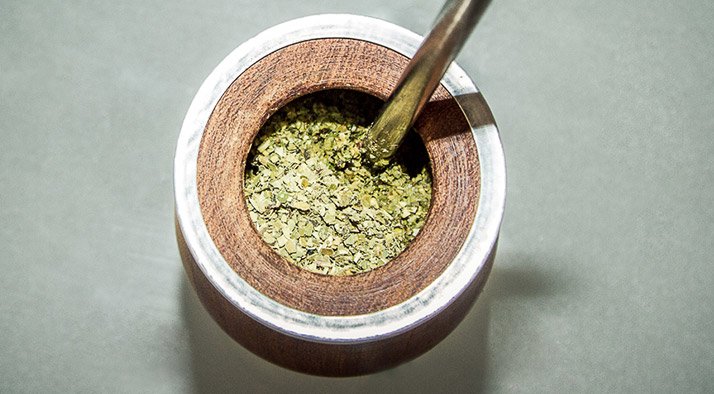
Also in rodent models, yerba mate extracts have been shown to be potent stimulants, improve motor activity and brain function, and provide neuroprotective benefits.24 However, no studies directly compare the effects of yerba mate to caffeine anhydrous.
The bottom line: Be forewarned that mate extracts range from 2-50 percent total caffeine, depending upon the raw material used, so calculating the caffeine dose from a supplement-facts panel will most likely be a guessing game. Like tea and coffee, it's far easier to know how much caffeine you're getting simply by consuming the naturally brewed drink itself.
References
- Fulgoni, V. L., Keast, D. R., & Lieberman, H. R. (2015). Trends in intake and sources of caffeine in the diets of US adults: 2001-2010. The American Journal of Clinical Nutrition, ajcn080077.
- US National Library of Medicine, ChemIDplus [Online Database]. National Institutes of Health, Health & Human Services, Bethesda, Maryland, URL: http://chem.sis.nlm.nih.gov/chemidplus/name/caffeine (18 Sept 2015)
- Tallis, J., Duncan, M. J., & James, R. S. (2015). What can isolated skeletal muscle experiments tell us about the effects of caffeine on exercise performance? British Journal of Pharmacology, 172(15), 3703-3713.
- Cruz, R. S. D. O., de Aguiar, R. A., Turnes, T., Guglielmo, L. G. A., Beneke, R., & Caputo, F. (2015). Caffeine Affects Time to Exhaustion and Substrate Oxidation during Cycling at Maximal Lactate Steady State. Nutrients, 7(7), 5254-5264.
- Graham, T. E., Helge, J. W., MacLean, D. A., Kiens, B., & Richter, E. A. (2000). Caffeine ingestion does not alter carbohydrate or fat metabolism in human skeletal muscle during exercise. The Journal of Physiology, 529(3), 837-847.
- Graham, T. E., Hibbert, E., & Sathasivam, P. (1998). Metabolic and exercise endurance effects of coffee and caffeine ingestion. Journal of Applied Physiology, 85(3), 883-889.
- US National Library of Medicine, ChemIDplus [Online Database]. National Institutes of Health, Health & Human Services, Bethesda, Maryland, URL: http://chem.sis.nlm.nih.gov/chemidplus/name/caffeine%20citrate (18 Sept 2015)
- Heytens, L., Heffron, J. J. A., & Camu, F. (1991). The caffeine contracture test for malignant hyperthermia: caffeine citrate, caffeine benzoate or caffeine free base? Acta Anaesthesiologica Scandinavica, 35(6), 541-544.
- USDA, ARS, National Genetic Resources Program. Germplasm Resources Information Network - (GRIN) [Online Database]; National Germplasm Resources Laboratory, Beltsville, Maryland. URL: http://www.ars-grin.gov/cgi-bin/duke/highchem.pl (17 Sept 2015)
- Van Dorsten, F. A., Daykin, C. A., Mulder, T. P., & Van Duynhoven, J. P. (2006). Metabonomics approach to determine metabolic differences between green tea and black tea consumption. Journal of Agricultural and Food Chemistry, 54(18), 6929-6938.
- Lin, Y. S., Tsai, Y. J., Tsay, J. S., & Lin, J. K. (2003). Factors affecting the levels of tea polyphenols and caffeine in tea leaves. Journal of Agricultural and Food Chemistry, 51(7), 1864-1873.
- USDA, ARS, National Genetic Resources Program. Germplasm Resources Information Network - (GRIN) [Online Database]; National Germplasm Resources Laboratory, Beltsville, Maryland. URL: http://www.ars-grin.gov.4/cgi-bin/npgs/html/taxon.pl?27031 (17 Sept 2015)
- Haskell, C. F., Kennedy, D. O., Wesnes, K. A., Milne, A. L., & Scholey, A. B. (2007). A double-blind, placebo-controlled, multi-dose evaluation of the acute behavioural effect of guarana in humans. Journal of Psychopharmacology, 21(1), 65-70.
- Pomportes, L., Davranche, K., Brisswalter, I., Hays, A., & Brisswalter, J. (2014). Heart rate variability and cognitive function following a multi-vitamin and mineral supplementation with added guarana (Paullinia cupana). Nutrients, 7(1), 196-208.
- Moustakas, D., Mezzio, M., Rodriguez, B. R., Constable, M. A., Mulligan, M. E., & Voura, E. B. (2015). Guarana Provides Additional Stimulation over Caffeine Alone in the Planarian Model. PloS One, 10(4).
- USDA, ARS, National Genetic Resources Program. Germplasm Resources Information Network - (GRIN) [Online Database]; National Germplasm Resources Laboratory, Beltsville, Maryland. URL: http://www.ars-grin.gov.4/cgi-bin/npgs/html/taxon.pl?300141 (17 Sept 2015)
- USDA, ARS, National Genetic Resources Program. Germplasm Resources Information Network - (GRIN) [Online Database]; National Germplasm Resources Laboratory, Beltsville, Maryland. URL: http://www.ars-grin.gov.4/cgi-bin/npgs/html/taxon.pl?102678 (17 Sept 2015)
- Salahdeen, H. M., Omoaghe, A. O., Isehunwa, G. O., Murtala, B. A., & Alada, A. R. (2014). Effects of chronic administration of ethanolic extract of kolanut (Cola nitida) and caffeine on vascular function. African journal of medicine and medical sciences, 43(1), 17-27.
- Salahdeen, H. M., & Alada, A. R. A. (2009). Effects of caffeine and ethanolic extract of kolanut on glucose uptake in the canine hindlimb at rest and during contraction. Nigerian Journal of Physiological Sciences, 24(1), 33-45.
- Umoh, I. O., Emmanuel, O. A., & Nna, V. U. (2014). Aqueous seed extract of Cola nitida rubra reduces serum reproductive hormone concentrations and sperm count in adult male albino Wistar rats. Nigerian Medical Journal: Journal of the Nigeria Medical Association, 55(6), 456.
- USDA, ARS, National Genetic Resources Program. Germplasm Resources Information Network - (GRIN) [Online Database]; National Germplasm Resources Laboratory, Beltsville, Maryland. URL: http://www.ars-grin.gov.4/cgi-bin/npgs/html/taxon.pl?19756 (17 Sept 2015)
- Gambero, A., & Ribeiro, M. L. (2015). The Positive Effects of Yerba Mate (Ilex paraguariensis) in Obesity. Nutrients, 7(2), 730-750.
- Hussein, G. M. E., Matsuda, H., Nakamura, S., Hamao, M., Akiyama, T., Tamura, K., & Yoshikawa, M. (2011). Mate tea (Ilex paraguariensis) promotes satiety and body weight lowering in mice: involvement of glucagon-like peptide-1. Biological and Pharmaceutical Bulletin, 34(12), 1849-1855.
- Santos, E. C. S., Bicca, M. A., Blum-Silva, C. H., Costa, A. P. R., Dos Santos, A. A., Schenkel, E. P., ... & De Lima, T. C. M. (2015). Anxiolytic-like, stimulant and neuroprotective effects of Ilex paraguariensis extracts in mice. Neuroscience, 292, 13-21.

